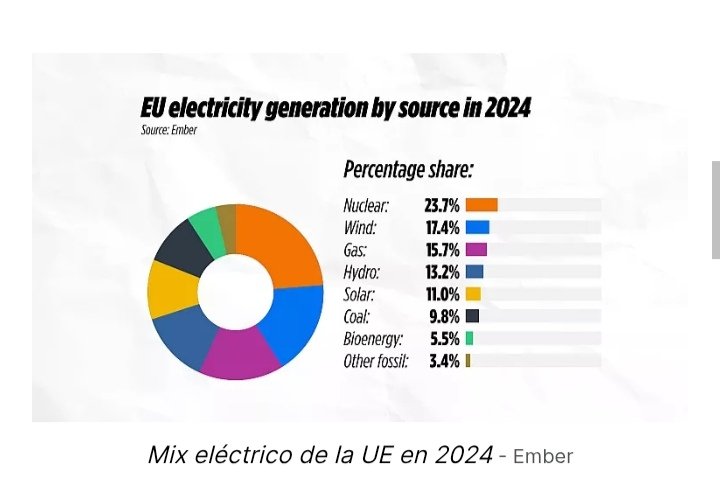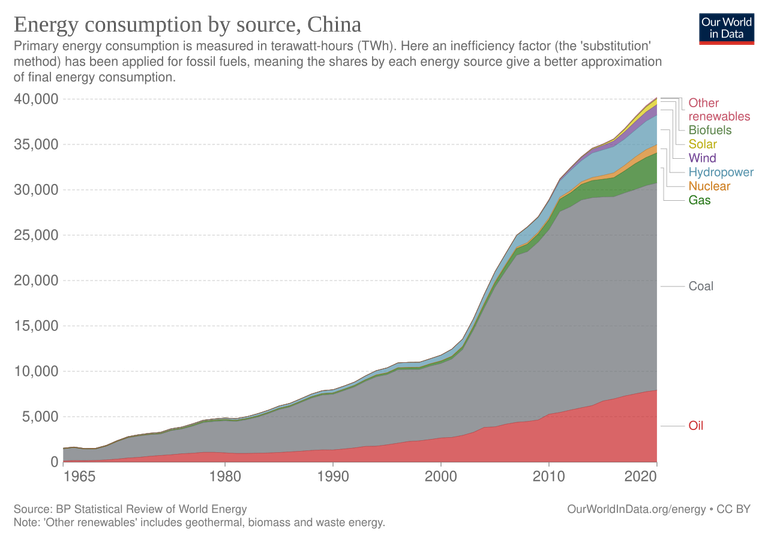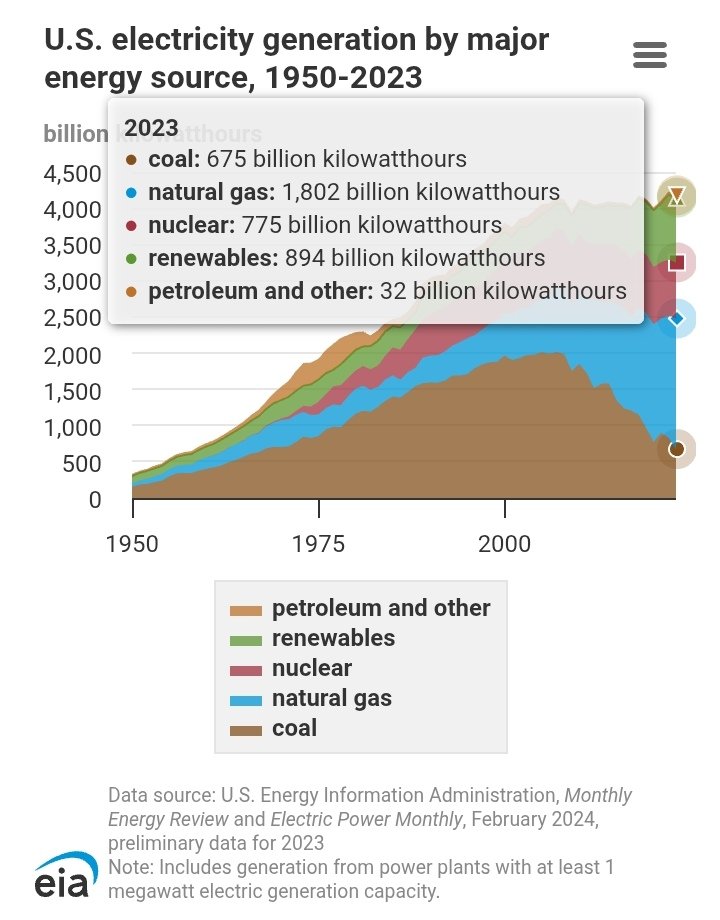World Powers: the energy race
It's neither Artificial Intelligence, nor Bitcoin, nor gold that will determine a country's development. What has moved, moves, and will always move the world will be energy. The development of each country will be determined by its ability to generate and use that energy, as well as optimize its production. The energy race is a reality.

To develop this idea, we must go back a little further. For example, during the time of Roman domination in Europe, energy could only be extracted from humans and domestic animals through manual labor. This meant that growth, construction, improvement, and development required a large population willing to perform heavy or undesirable labor. Given the shortage of volunteers, slavery was invented.
In short, all major projects, food, technology—everything was limited by the human or animal ability to move things. Ways to optimize the use of that energy emerged: the wheel, pulley systems, the lever, etc. And ways to harness the power of wind and water emerged: sails and mills.
This allowed the community to advance, shortening trade and communication routes. However, this limit on the capacity to generate, optimize, and utilize energy kept humanity at a standstill in technological advances.
It wasn't until 1765, with the invention of the steam engine, that things began to truly move, communication routes were shortened, heavier loads could be moved, and the Industrial Revolution began. This phenomenon, hungry for energy, began to seek new ways to optimize and generate energy on a large scale, leading to the discovery of internal combustion engines (and the universalization of petroleum as the primary fuel) and electricity. The energy race took off.
With electricity, humanity made a technological leap that has allowed us to advance in less than 150 years more than in all of human history. That's why today, talking about energy is synonymous with electricity.
In today's world, being able to meet the growing demand for electricity is what determines a country's development. Having large reserves of oil, gas, and minerals is no guarantee of anything if there's no capacity to extract and use them. This is the case of Venezuela, with its frequent power outages due to a generation deficit.
A lack of foresight and investment in this area can lead to problems, as in Ecuador, which relies heavily on hydroelectric plants and, faced with droughts, cannot meet its domestic demand. Or it can condemn a country to poverty, as in Cuba, where power outages of between 13 and 14 hours a day make any productive economic activity almost impossible.
And it is this lack of foresight that could cost the United States of America its future role as the world's leading economic power and Europe its energy independence (which is currently quite weak).
Energy Race: The Case of Europe

Let's start with Europe. A continent (which, due to its size, shouldn't be considered a continent) that seems determined to abandon (or at least is engaged in a heated debate about it) the world's most reliable source of electricity generation: nuclear power. This would further undermine its electrical independence, as currently most of the gas and oil it consumes is Russian, and Russia is hardly an ally.
Although they have made progress in renewable energy, these require a complement that provides stability and can meet demand in the event of a decrease in generation. A characteristic of renewable energy is that production depends on weather conditions. Whether this complement is gas or coal is a huge contradiction. Nuclear energy, like it or not, is the perfect complement.
However, Europe seems determined to sabotage itself in many ways. In the energy race, the European case is less complex, as they only have to focus (or not) on electrical energy independence. Because their economic and technological influence on the rest of the world is increasingly smaller..
Now we come to two cases where the energy race is vital to their dominant position in the world: China and the United States of America.
Energy Race: China Case
In China, they tend to exaggerate a little, even with the data, but it cannot be denied that more than a campaign slogan like others, the country's spirit and its actions have been aimed at Making China Great Again for three decades. They have exploited the world's vision of them as a cheap labor force and a global factory and have hijacked almost all of the world's productive chains. It's no longer just that they copy what others do; now they design, manufacture, and sell it to others so they can brand it.
And if it's something of strategic importance, they produce so much so quickly that prices collapse. This is the case of solar panels. They have produced so much so quickly that the main producers have organized to set a limit so that solar panel prices don't fall below what is profitable.
The case of electrical energy produced by solar radiation is unique. It is the one that has lowered its prices the fastest and has achieved the greatest adoption and efficiency in recent years. They also help distribute and decentralize energy by producing exactly where demand is.
And this is very important in the Asian giant, which, since 2011, surpassed the United States to become the world's leading producer and consumer of electricity.
 |  |
|---|
To overcome its dependence on coal as its primary source of electricity generation, China is turning to nuclear energy and renewable sources.
In the case of nuclear energy, it contributes 435 TWh to the nation, or about 5% of the country's total generation. However, they are building half of the world's projected nuclear generating capacity. With a current capacity of 58 GW, they expect to increase this to 88 GW by 2029 (this capacity is already under construction); however, they have announced their intention to increase this to 118 GW of nuclear energy.

While hydro and wind power play a significant role in renewable energy generation, China has set its sights on becoming a Type 1 civilization and, to this end, has fully developed solar power generation technology. They have become the world's largest consumer of solar energy and the largest producer of solar panels and solar heaters.
Due to its easy and cost-effective installation, they have opted for distributed solar generation to electrify rural areas or increase generation in required areas. China's goal is to reach peak carbon emissions before 2030 and achieve carbon neutrality by 2060. However, the most important thing is that they are planning to guarantee energy generation and optimization to ensure future development.
Energy Race: The Case of the United States of America
It seems that the United States lacks a national vision or a future. Everything is driven more by the interests of the dominant party during the four years it controls the presidency and Congress, and this also affects energy production. In this case, it's not about what's best, but rather which industry has the best lobbyists and supports the winning candidates.

Donald Trump's One Big Beautiful Bill Act has dealt a blow to the cheapest and most versatile energy source: solar energy. If approved, tax credits for solar and wind generation would be withdrawn, which could have long-term negative implications for the US market. Only Artificial Intelligence and data centers will boost demand in the future. Cheap energy is what will determine the future of the energy race, and ignoring solar energy could leave the nation behind in the race to remain a global economic power. Without solar or wind, it will be very difficult or very expensive to meet the demand forecast for 2030 in the United States.
While geothermal energy is expected to increase to 5 GW by 2030, and a projection of up to 90 GW by 2050, without solar or wind, the future looks bleak. Even more so when one considers that oil and gas subsidies remain intact. The goal of net-zero emissions by 2030 is dead.

Perhaps as compensation, Trump signed executive orders to expand nuclear power from 100 GW today to 400 GW by 2050. However, these are simply incentive guidelines, not real projects or investment guarantees. 2050 is a long way off, and the need for more energy is urgent.
Conclusion
The flow and optimization of energy is what drives physical changes in the world. Ignoring the most sustainable, secure, consistent, and affordable forms of energy represents the difference between development and catastrophe.
Electricity consumption increases by 4% each year (global average). The United States appears to be handing over leadership to China in the production and implementation of renewable energy, especially solar energy. Perhaps this self-sabotage behavior is contagious between allies. In the energy race, China has the advantage.
Sources:
Posted Using INLEO
https://www.reddit.com/r/energy/comments/1lhgvxc/world_powers_the_energy_race/
This post has been shared on Reddit by @uwelang through the HivePosh initiative.